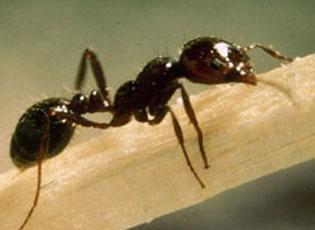Solenopsis invicta Buren, 1972 (ITIS)
Red imported fire ant (RIFA)
Solenopsis wagneri Santschi (ITIS)
South America (Jemal and Hugh-Jones 1993)
Probably between 1933 and 1945 (Jemal and Hugh-Jones 1993)
Possibly introduced in ships' ballast (Fitzpatrick et al. 2007)
Can attack and cause painful stings on humans, pets, and livestock (Jemal and Hugh-Jones 1993)

Red Imported Fire Ant, Adult USDA, APHIS, Plant Protection and Quarantine Archives.
Spotlights
Distribution / Maps / Survey Status
Federally Regulated
All Resources
Selected Resources
The section below contains highly relevant resources for this species, organized by source.
Council or Task Force
Partnership
Federal Government
International Government
State and Local Government
Academic
Fitzpatrick, M.C., J.F. Weltzin, N.J. Sanders, and R.R. Dunn. 2007. The biogeography of prediction error: why does the introduced range of the fire ant over-predict its native range? Global Ecology and Biogeography 16(1):24-33.
Integrated Taxonomic Information System. Solenopsis invicta. [Accessed Sep 22, 2023].
Jemal, A., and M. Hugh-Jones. 1993. A review of the red imported fire ant (Solenopsis invicta Buren) and its impacts on plant, animal, and human health. Preventative Veterinary Medicine 17(1-2):19-32.
